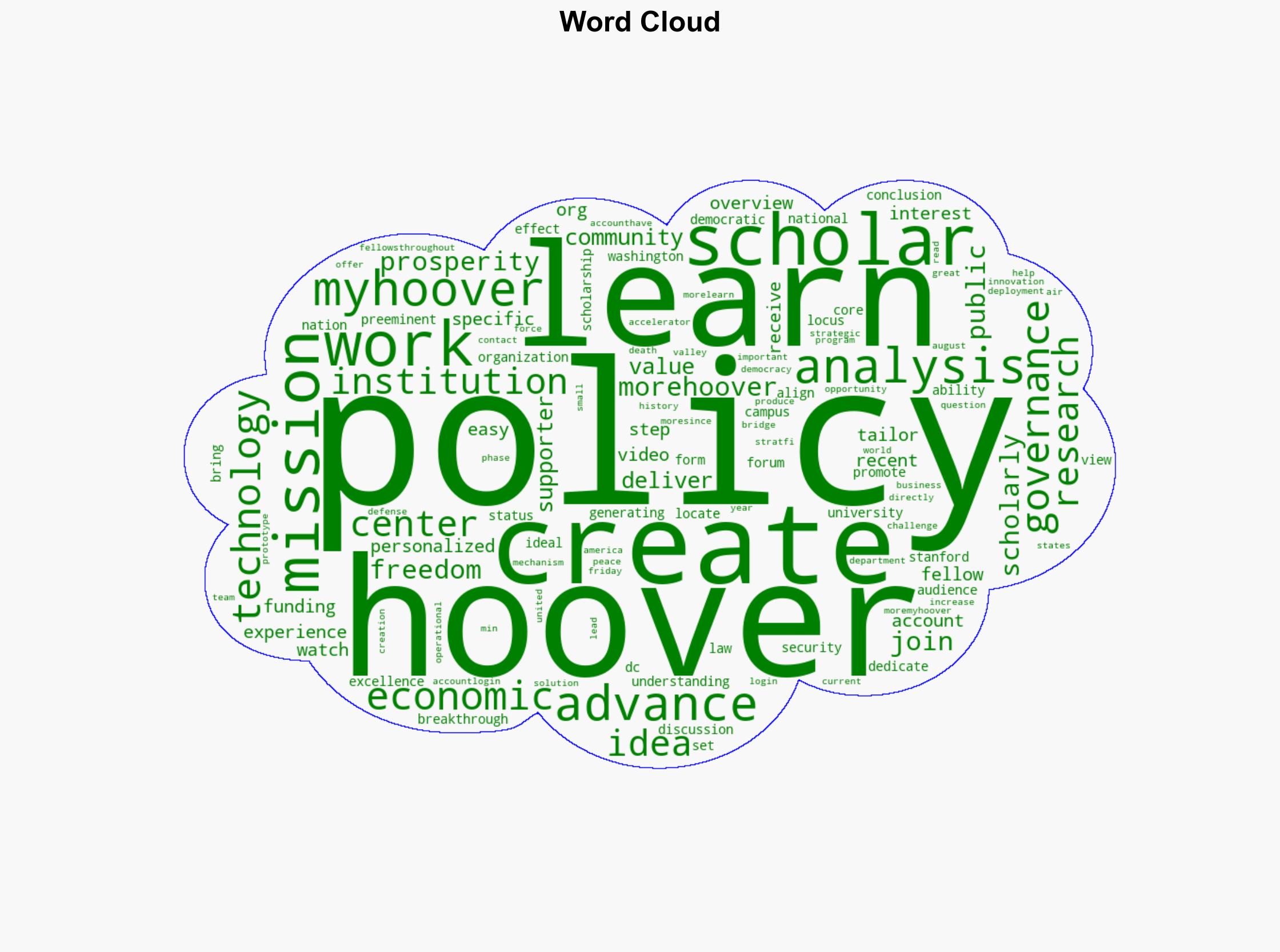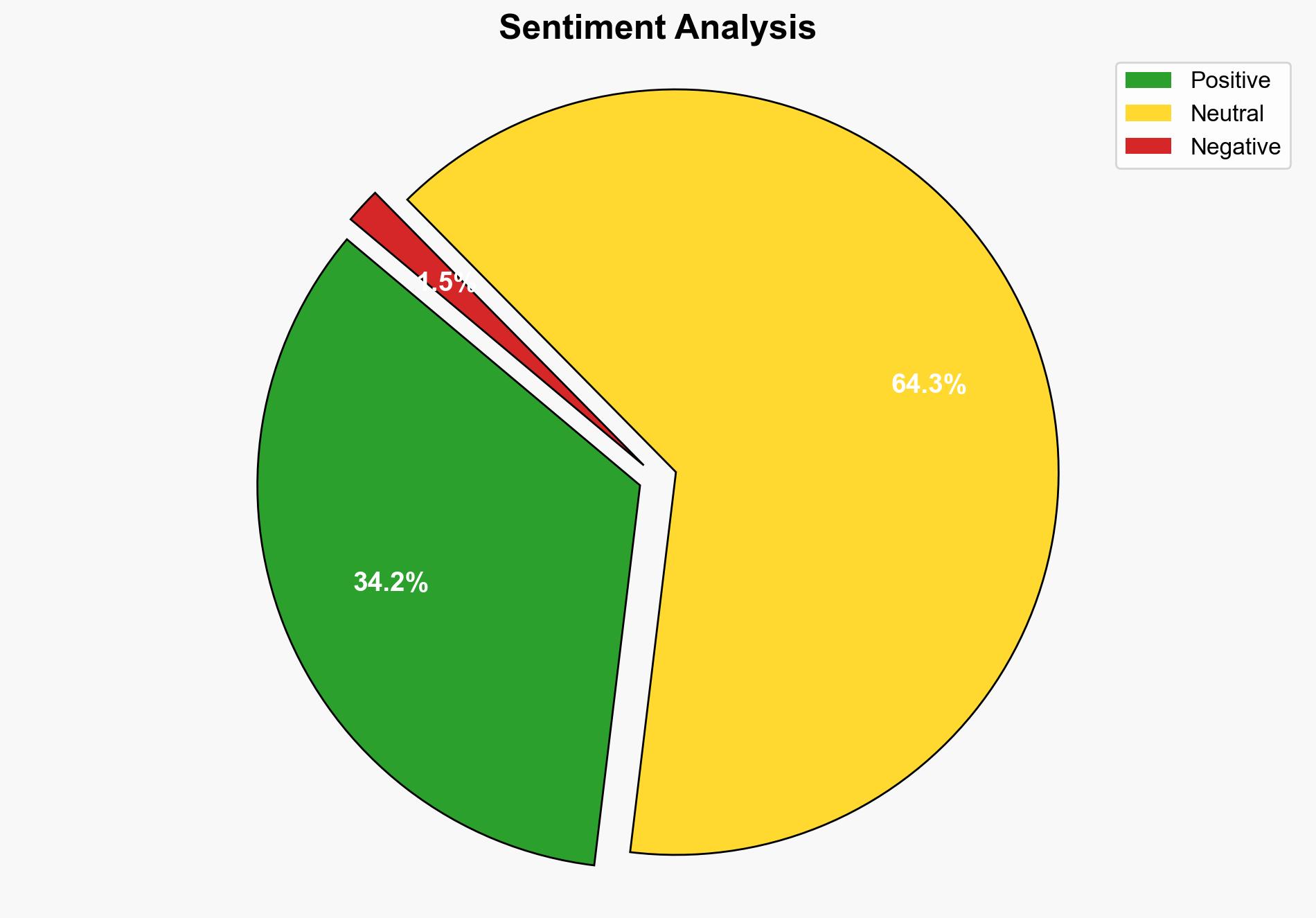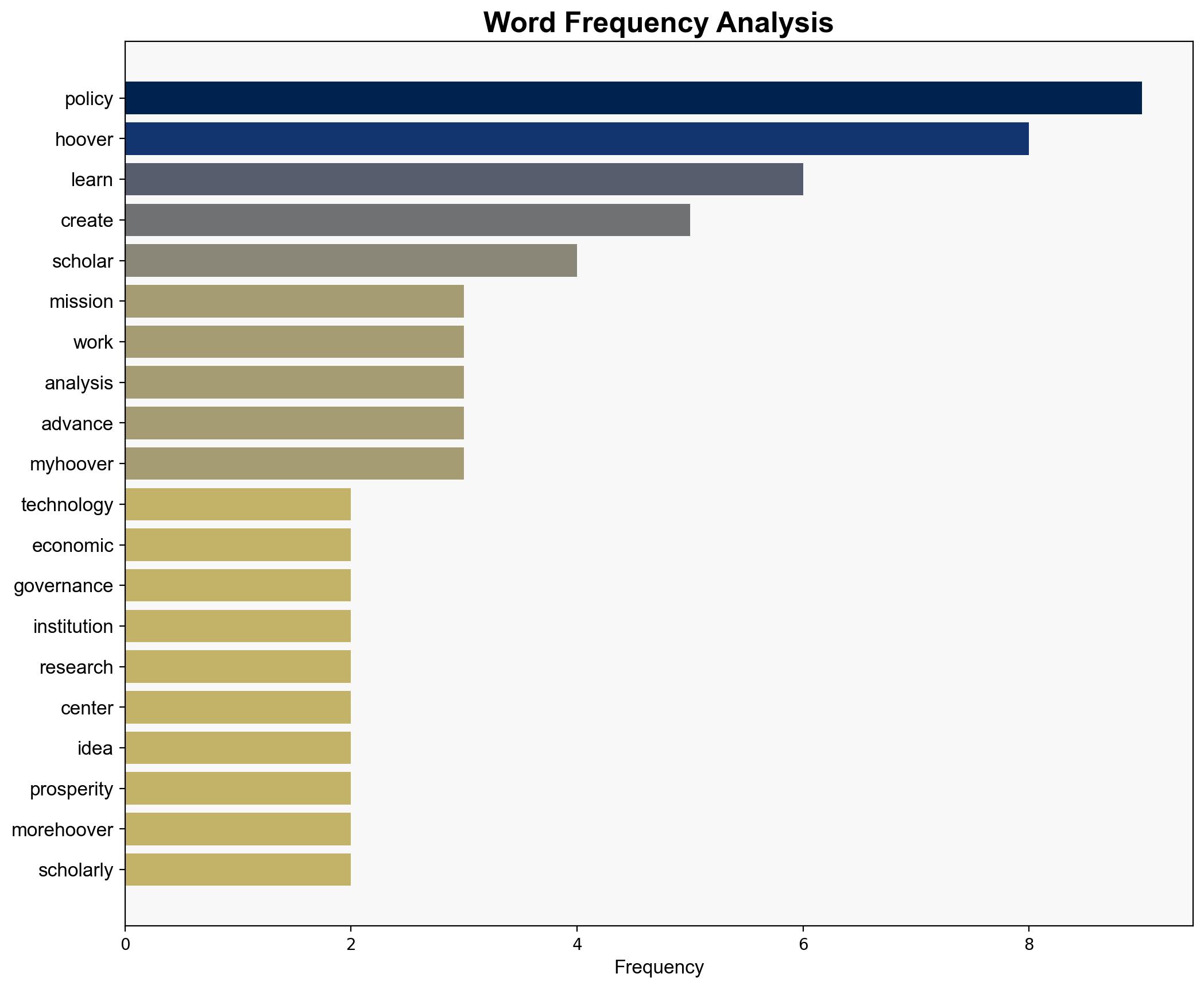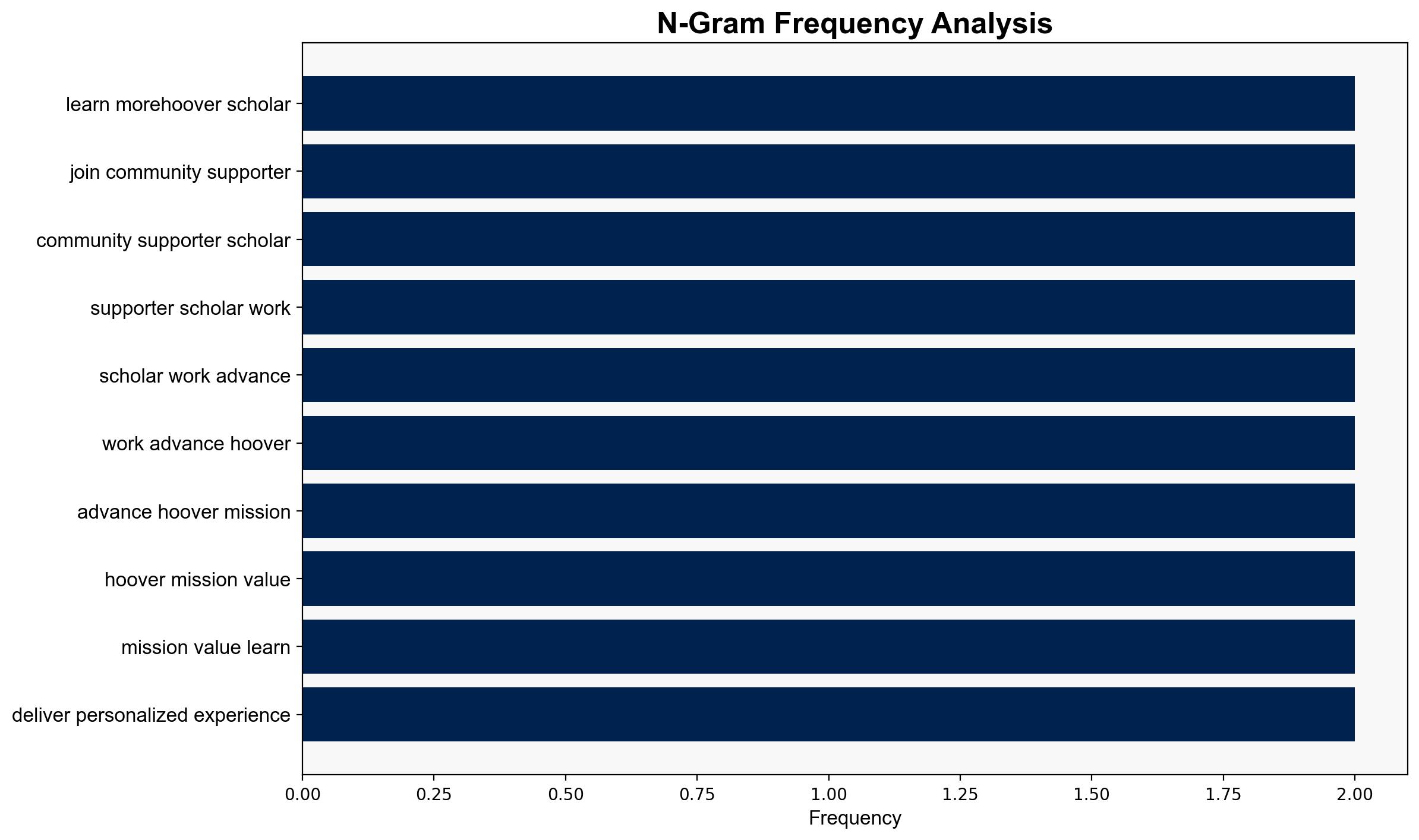Legal Origins Of The Strategic Funding Increase Program – Hoover.org
Published on: 2025-10-09
Intelligence Report: Legal Origins Of The Strategic Funding Increase Program – Hoover.org
1. BLUF (Bottom Line Up Front)
The analysis suggests that the Strategic Funding Increase (StratFI) program is primarily designed to enhance defense innovation by supporting small businesses through critical funding phases. The most supported hypothesis indicates that the program’s legal origins are rooted in a strategic need to bridge the gap between prototype development and operational deployment, thereby strengthening national security. Confidence level: Moderate. Recommended action: Further investigation into the program’s legal framework and its alignment with broader defense strategies.
2. Competing Hypotheses
1. **Hypothesis A**: The StratFI program was legally established to specifically address the “valley of death” in defense innovation, ensuring small businesses can transition their technologies from prototype to operational deployment effectively.
2. **Hypothesis B**: The program’s legal origins are more broadly tied to economic and technological policy objectives, aiming to stimulate general economic prosperity and innovation beyond defense-specific applications.
Using ACH 2.0, Hypothesis A is better supported by the focus on defense innovation and the specific mention of bridging the “valley of death,” a common term in defense procurement.
3. Key Assumptions and Red Flags
– **Assumptions**: Hypothesis A assumes a direct link between legal origins and defense-specific objectives. Hypothesis B assumes a broader economic policy influence.
– **Red Flags**: Lack of detailed legal documentation or explicit policy statements linking the program to specific defense or economic objectives. Potential bias in interpreting the program’s goals based on limited information.
4. Implications and Strategic Risks
The StratFI program’s success in bridging the “valley of death” could enhance national security by accelerating the deployment of innovative technologies. However, failure to effectively manage the program could result in wasted resources and missed opportunities for technological advancement. Geopolitically, strengthening defense capabilities could alter regional power dynamics, potentially escalating tensions.
5. Recommendations and Outlook
- Conduct a detailed legal review of the StratFI program to clarify its objectives and alignment with national defense strategies.
- Engage with small businesses and defense contractors to assess the program’s effectiveness and identify areas for improvement.
- Scenario Projections:
- Best Case: Successful transition of multiple technologies to operational deployment, enhancing national security.
- Worst Case: Program inefficiencies lead to resource wastage and minimal impact on defense capabilities.
- Most Likely: Incremental improvements in technology deployment with ongoing adjustments to program execution.
6. Key Individuals and Entities
No specific individuals are mentioned in the source text. The Hoover Institution and the Department of the Air Force are key entities involved in the context of the StratFI program.
7. Thematic Tags
national security threats, defense innovation, economic policy, technology transition




